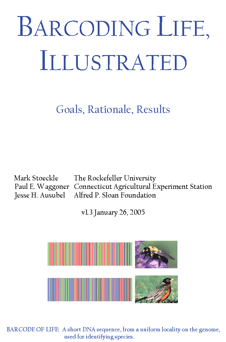In 21 June 2006 Heredity News and Commentary “DNA barcodes: recent successes and future prospects” Dasmahapatra and Mallet describe the DNA barcoding initiative as “plausible and worthwhile” and conclude that “recent studies convincingly demonstrate the efficacy of DNA barcoding to recover biologically significant groupings or species”. Their generally positive review stumbles near the end with a call “to supplement the mtDNA-based barcode with nuclear barcodes.” This is an impractical proposal of uncertain benefit. First of all, routinely adding a “nuclear barcode”, if one were to be found, would be solving a problem that does not exist, as there are few cases so far in which an mtDNA COI barcode does not distinguish closely-related species. Of  course these exceptional cases need further taxonomic study “integrating DNA sequencing, morphology, and ecologic studies”. Secondly, although over 30 years of research demonstrate the broad utility of mtDNA in delimiting animal species, no one has yet identified a nuclear locus that can regularly distinguish closely-related species, as Dasmahapatra and Mallet acknowledge.
course these exceptional cases need further taxonomic study “integrating DNA sequencing, morphology, and ecologic studies”. Secondly, although over 30 years of research demonstrate the broad utility of mtDNA in delimiting animal species, no one has yet identified a nuclear locus that can regularly distinguish closely-related species, as Dasmahapatra and Mallet acknowledge.
Most of the topics in their review are analyzed in our 2005 brochure “Barcoding Life, Illustrated” which outlines the benefits and limitations to DNA barcoding, including a section on “Why barcode animals with mitochondrial DNA?” .